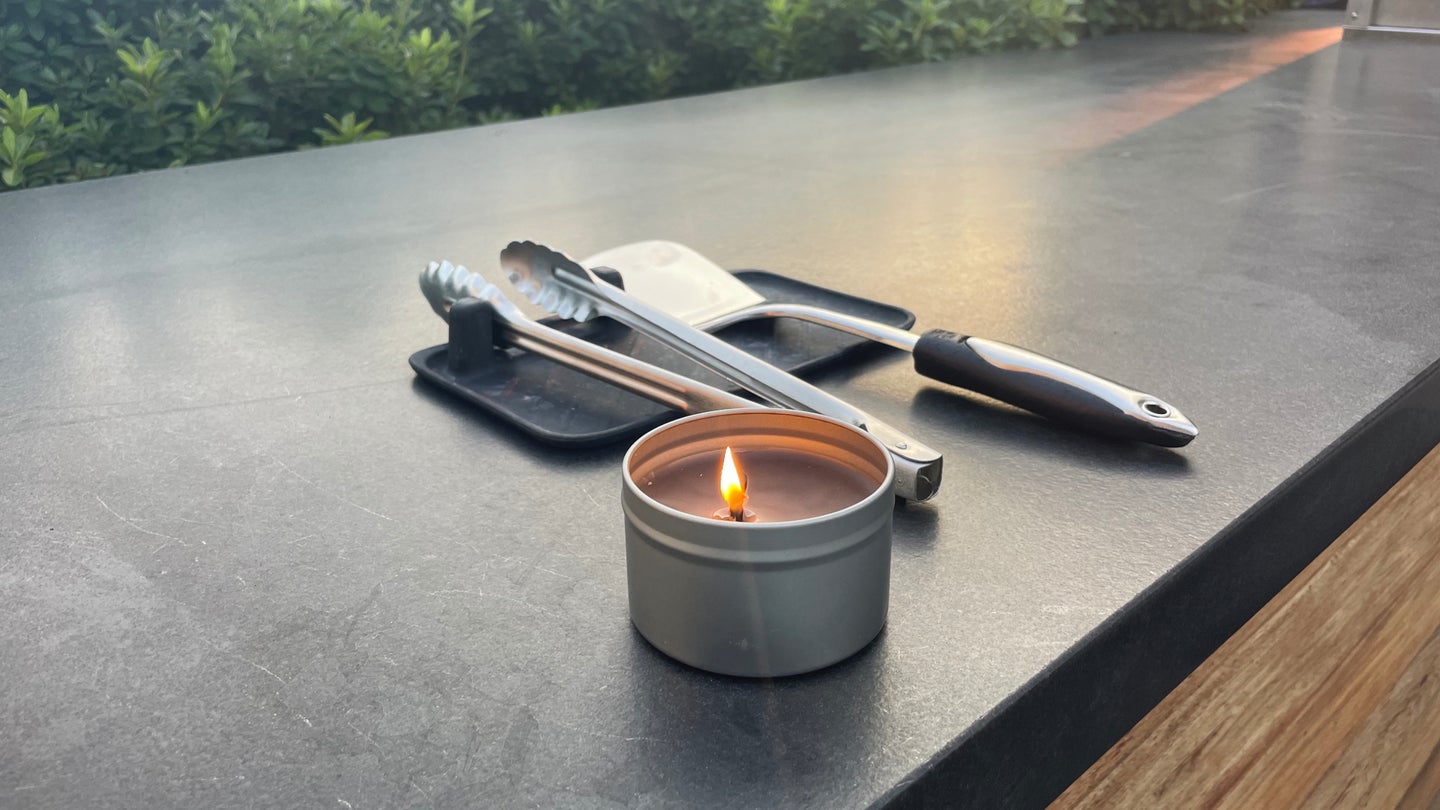
We may earn revenue from the products available on this page and participate in affiliate programs. Learn more ›
Whether you’re working to create a romantic mood or trying to hex your ex, having a few candles around is a great way to set the scene. But all too often, a candle will reach the end of its useful life long before it’s actually run out of wax. Maybe you failed to trim your wick or prevent the dreaded tunneling that makes candles burn unevenly, leaving you with a lumpy mess that won’t hold a flame. Maybe you dropped a candle on the floor and don’t want the mess of wax scraps to go to waste. Even if you practice perfect candle-preserving etiquette, you’re bound to end up with at least a smidge of wax stuck to the bottom of your candle holder when all is said and done.
If tossing bits of spent candles makes you feel guilty, there are ways to make your candle-buying habits more eco-friendly, like avoiding petroleum-based paraffins in favor of beeswax or soy, which have lower carbon footprints. But you can go one step further by recycling your candle scraps to make entirely new candles. The process is especially handy for making citronella candles to repel bugs naturally when you spend time outside.
Stats
- Time: about an hour of active work, and at least 24 hours of resting time
- Cost: as low as 10 cents per candle
- Difficulty: easy
Materials
- Used candles
- Water
- Candle wicks
- Used candle jars, small mason jars, or empty candle tins
- (Optional) citronella oil or another scented oil
Tools
- Stove
- Saucepan
- A glass or metal bowl, double boiler, or candle-making pot
- A shallow glass or metal baking pan
- Mason jar or glass measuring cup
- Popsicle stick, wooden skewer, or chopstick
- Kettle or microwave
- Cheesecloth or fine mesh strainer
- (Optional) oven mitts
- (Optional) freezer
How to melt old candles to make new ones
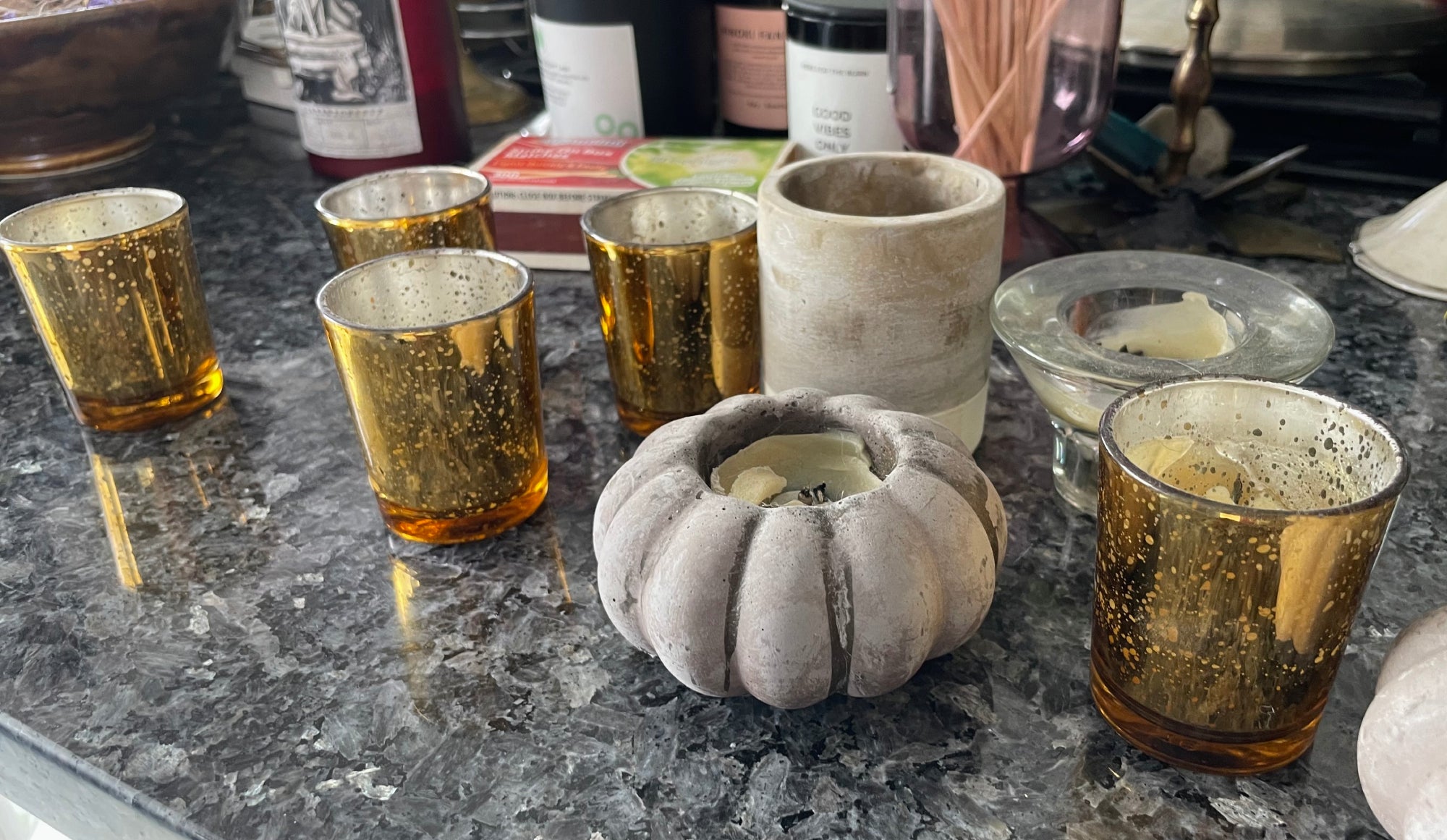
1. Harvest your used wax. You’ll need to separate the wax from the containers it’s stuck to so you can melt and reshape it. The exact process will depend on what candles you’re working with and what shape they’re in. Have candle scraps that are already free from their holders? You can skip this step entirely.
If your candles have melted into fragile candlesticks, try putting the candlesticks into the freezer for several hours before gently prying at the wax with a gentle implement, like a chopstick from a takeout order.
Otherwise, here is how to get wax out of candle jars, especially ones made of metal or glass:
- Place the jars open-side-up in the shallow pan or baking sheet. You’ll want to sit the pan on something that won’t get damaged by heat. You can place it on your stovetop, a wooden cutting board, or an oven mitt to protect your countertops.
- Boil a couple cups of water.
- Pour some of the water into the pan so it surrounds the jars. Let the water get as high as it can without risking a dangerous spill.
- Divide the rest of the water among the candle jars, leaving just a bit of space below the rim.
- Leave this setup alone for about an hour. By then, the wax should have separated from the bottom of the jar, floated to the top, and cooled and hardened once again, making it easy to pull out. Put the wax aside to use later.
- If some of the wax is still stuck, try jostling it with a popsicle stick or chopstick to loosen it, then repeat this process again.
2. (Optional) Sort your wax scraps. If you’re only recycling unscented candles of the same color, you can skip right to Step 3. If you’re recycling a whole mess of different candles at once, stop and consider whether you might want to separate them into batches. Are there any scents involved, and will they play nice together in your new candle? If there are multiple colors, are you alright with them combining into a muddy brown? Follow your heart!
- Pro tip: Wax and soy candles play pretty well together when they’re melted down, though they’ll melt at different speeds and require stirring.
3. Prep your candle vessels. You can reuse old candle jars (just clean them with boiling water first) or use fresh tins from a candle making kit.
4. Place your wicks. Most wicks come with double-sided stickers. Peel off one side and place the sticker in the center of a candle vessel. Unpeel the other side and stick the metal base of the wick on top.
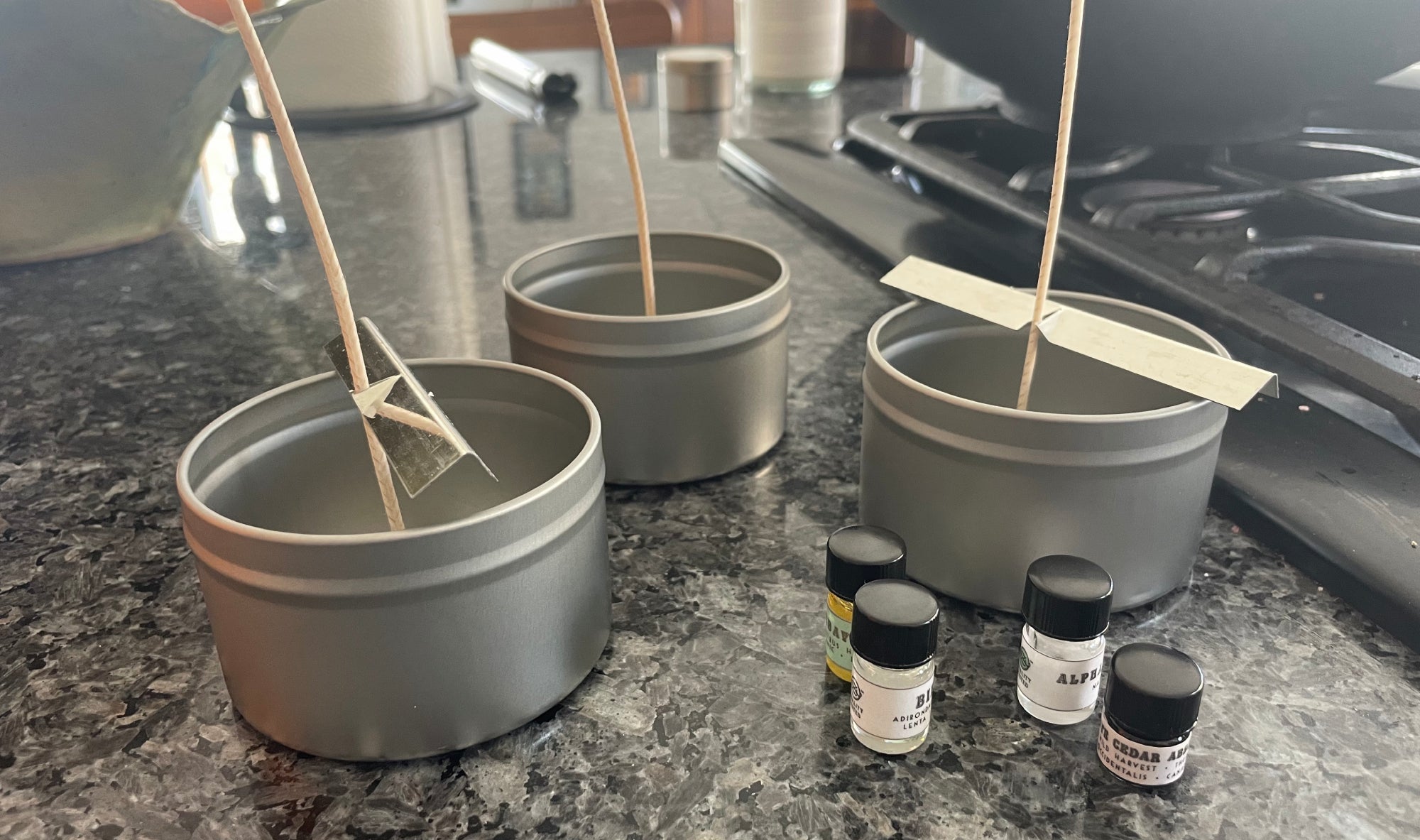
5. Melt your wax. This step is similar to the first step of regular candle making, but with the added concern of contaminants from the used wax. Your spent candles are bound to have bits of wick, metal wick-holders, and even ashy old matches stuck inside them. You don’t want any of that going into your new candles.
- Place your wax scraps into the pot or bowl you’re using as the top half of a double boiler.
- Fill your saucepan or the bottom of your double boiler about halfway with water (the exact amount isn’t important). Set it on the stove and place the container of wax scraps inside. If you’re using a bowl, you’ll want the bowl to nest inside the saucepan without touching the water or the bottom of the pan, so the water is simmering beneath it. Set the heat to medium.
- Allow your wax to melt. This should take anywhere from five to 10 minutes, depending on how much you’re melting and what its composition is. Stir occasionally with your wooden implement to keep things heating evenly.
6. Strain your wax. Your melted wax probably looks pretty gritty and gross. Straining impurities out will help your finished candles burn cleaner. They still might not be as clean as fresh wax when you’re done, which is why this recycling hack is especially great for DIY citronella candles—a little extra smokiness will just make them more effective against bugs.
- Using a fine-mesh strainer or a piece of cheesecloth, strain the wax from the double-boiler into a clean mason jar or glass measuring cup.
- Warning: If you’re using a glass or metal bowl instead of a candle-making pot or a double-boiler with a handle, make sure you use an oven mitt to protect your hands. Melted wax is hot!
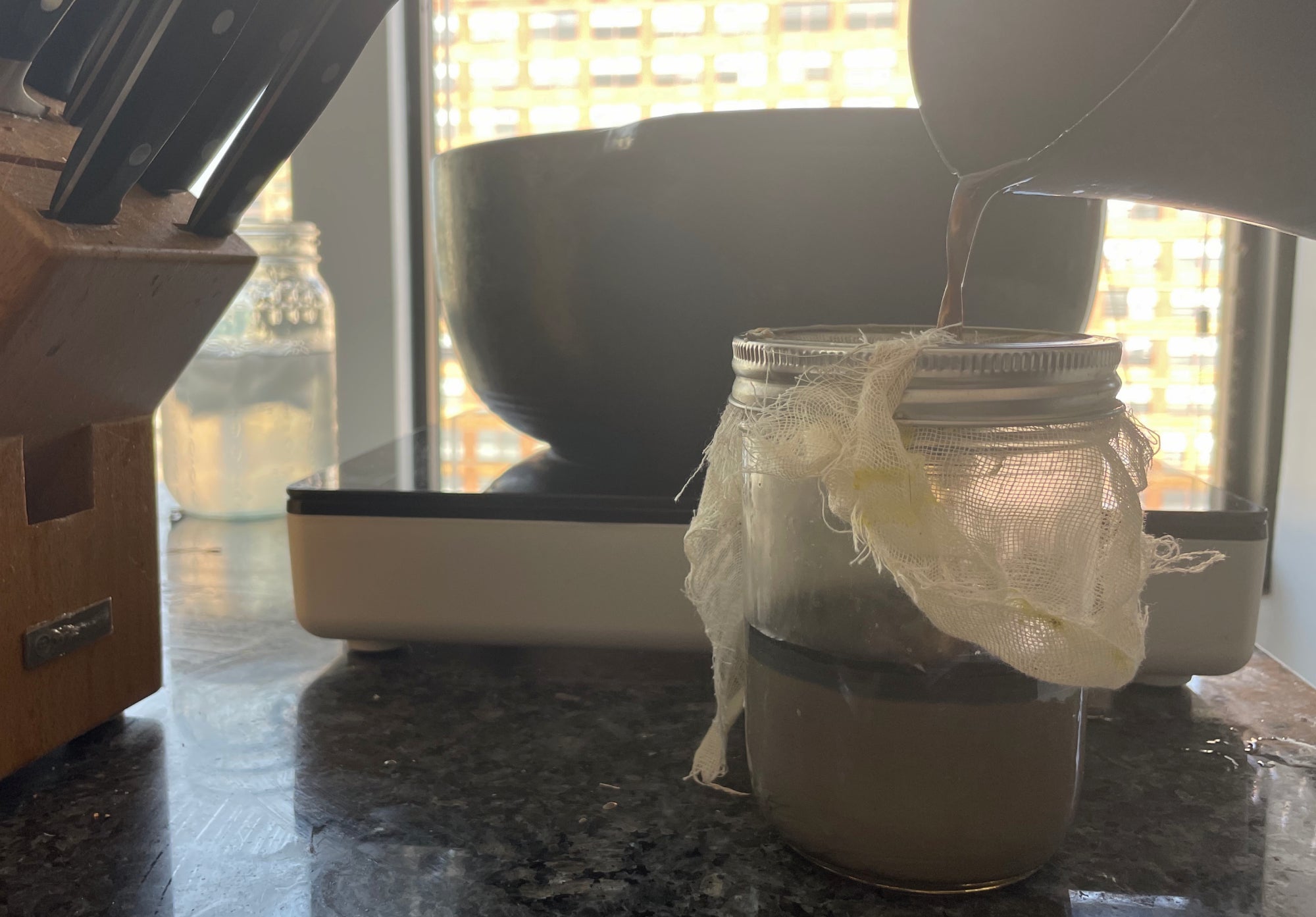
7. (Optional) Repeat this process one or two more times, if desired. If wax starts to harden onto your measuring cup or mason jar, pop it in the microwave for 30 seconds to loosen the wax up again.
- Warning: Make sure no metal bits from the wax have ended up in the jar before you put it into the microwave! Microwaves can get electric currents going in metal, and metal objects with jagged or pointed edges can produce sparks that pose a fire hazard.
Your wax will probably still look a bit murky after straining, especially if you’ve mixed colors. Prioritize getting all the metal wick pieces out.
8. Add all the clean wax back into the double boiler so it melts completely.
9. (Optional) Add scents. If you want to make citronella candles, add five to 10 drops of citronella oil to the melted wax and stir. You can add other scented oils, too, including old perfume samples. Just make sure to keep the underlying smell of the recycled wax in mind. This is entirely based on your own sensory sensibilities. But for example, a pumpkin pie candle and an apple pie candle will probably combine to smell like baked goods. A pumpkin pie candle and a floral candle will probably just smell confusing and over-perfumed, because those scent profiles are very different and don’t tend to get paired together. A pumpkin pie candle and a smoky leathery whiskey candle might smell great, or it might be a chaotic assault to your senses!
10. Pour your candles. If you need to hit the pause button after melting and straining your candles, you can simply take the double-boiler off the heat and allow the wax to cool. It will be ready to use whenever you want it. When you’re ready to pour your candles, reheat the wax using the same method detailed in Step 3. Then continue here:
- Remove your melted wax from the heat. If the vessel it’s in doesn’t already have a spout, consider transferring it to a glass measuring cup to make pouring easier.
- Slowly pour wax into each candle jar or tin. Leave at least half an inch of space at the top.
11. Let the candles cure. Ideally, you should place your candles in a relatively warm spot so they cool down very slowly. This keeps them from splitting. As you can see from my photos, my air conditioning was a little too powerful for a smooth cooling process—they’d have come out prettier if I’d put them into the pantry.
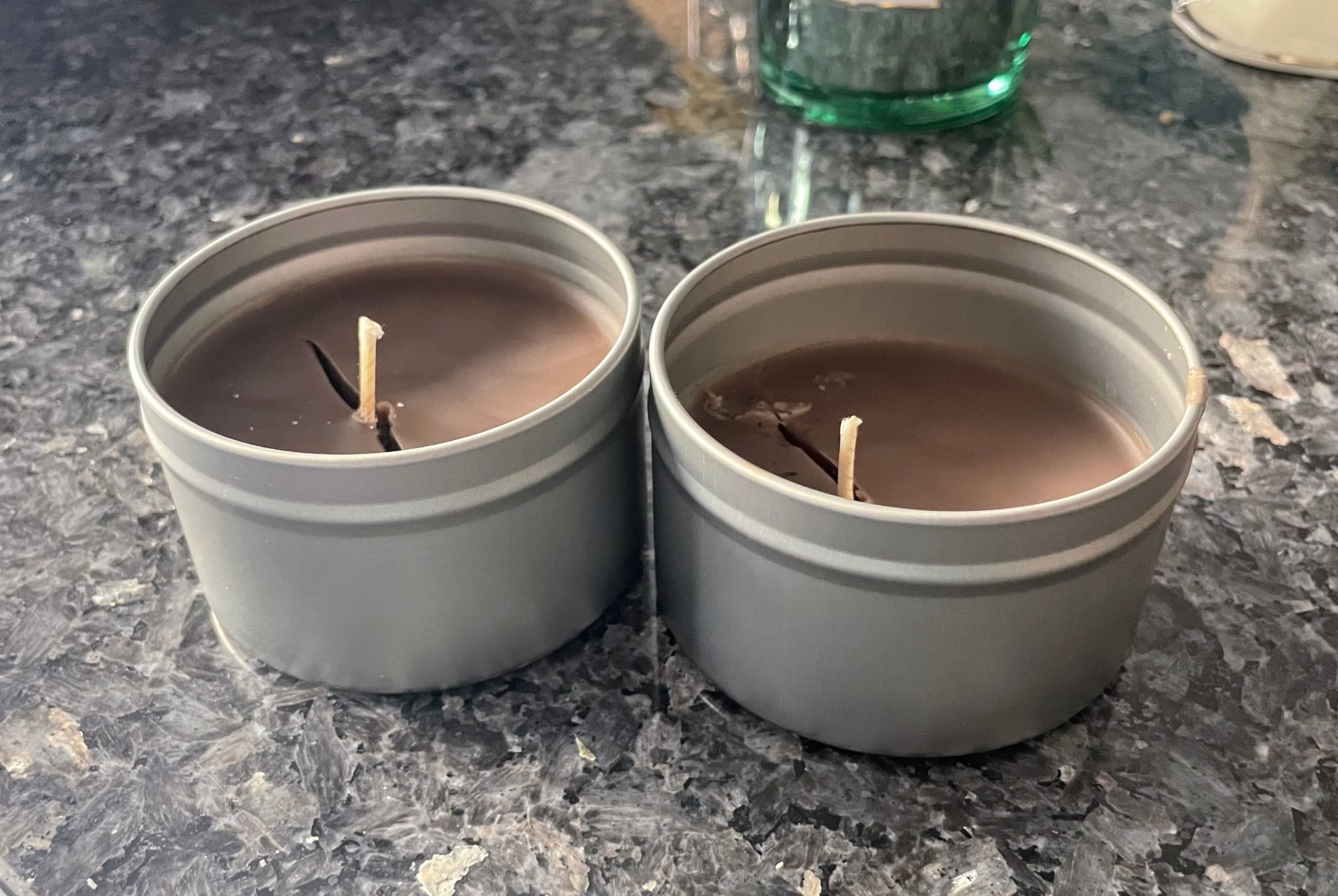
Leave your candles undisturbed for 24 to 48 hours. They may appear hardened much sooner than this, but they’ll last longer if you wait until they’re fully set to burn them.
Should I only burn recycled candles outside?
Use your judgment on this one. At best, indoor candles risk introducing pollutants into the air, but they’re especially unhealthy if you see them burning black and emitting soot. Because recycled wax has already been through a few burns, it’s liable to already have some soot mixed in (especially if you have a terrible habit of dropping matches into your pillar candles like I do). The best and safest way to use recycled candles is for outdoor entertainment, which is why they make great citronella candles. But if your repurposed wax looks super pristine and burns as clean as your fresh candles, more power to you.
The post How to Frankenstein old wax scraps into a totally new candle appeared first on Popular Science.
Articles may contain affiliate links which enable us to share in the revenue of any purchases made.
from | Popular Science https://ift.tt/JgjQWZN




0 Comments